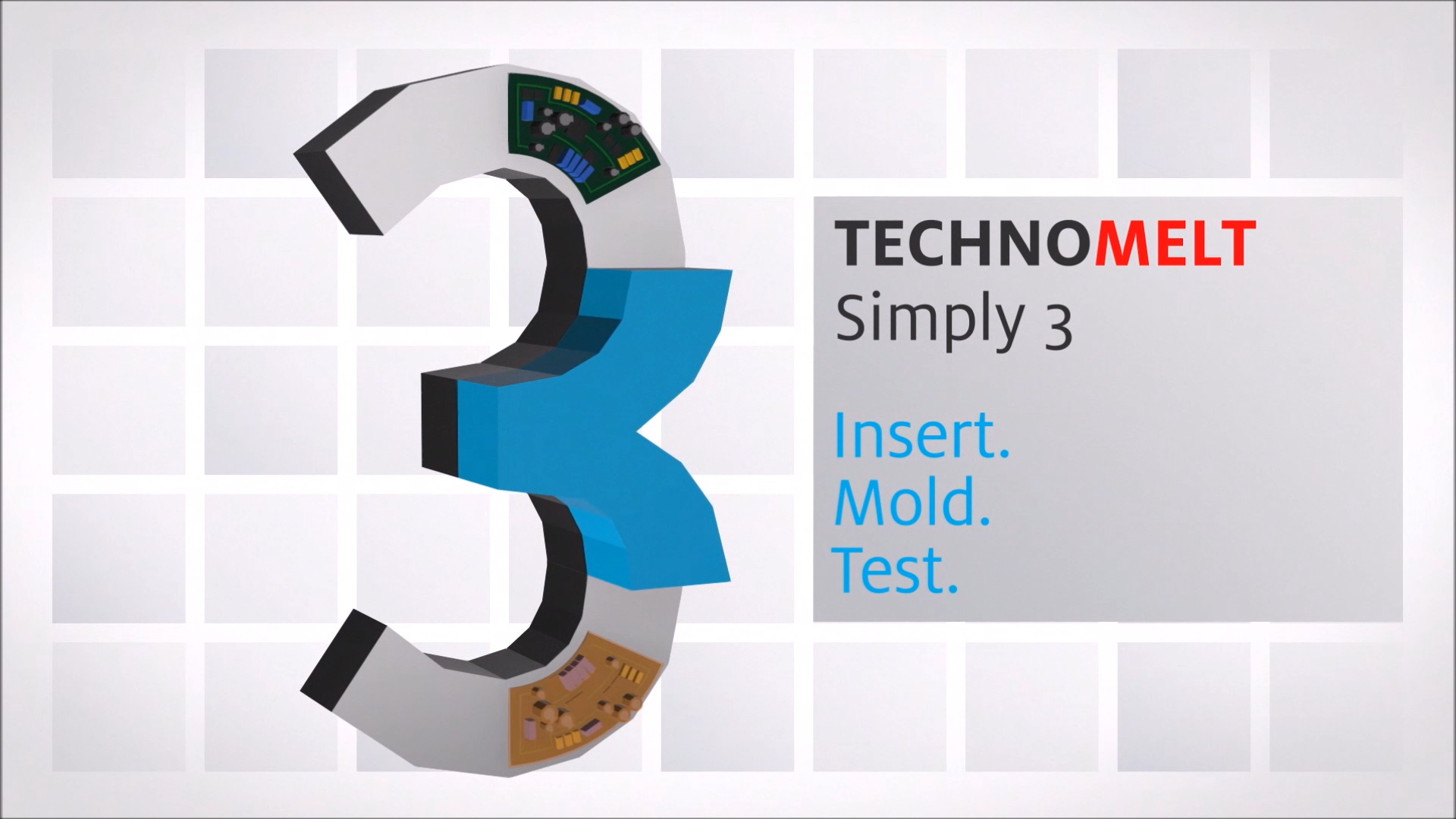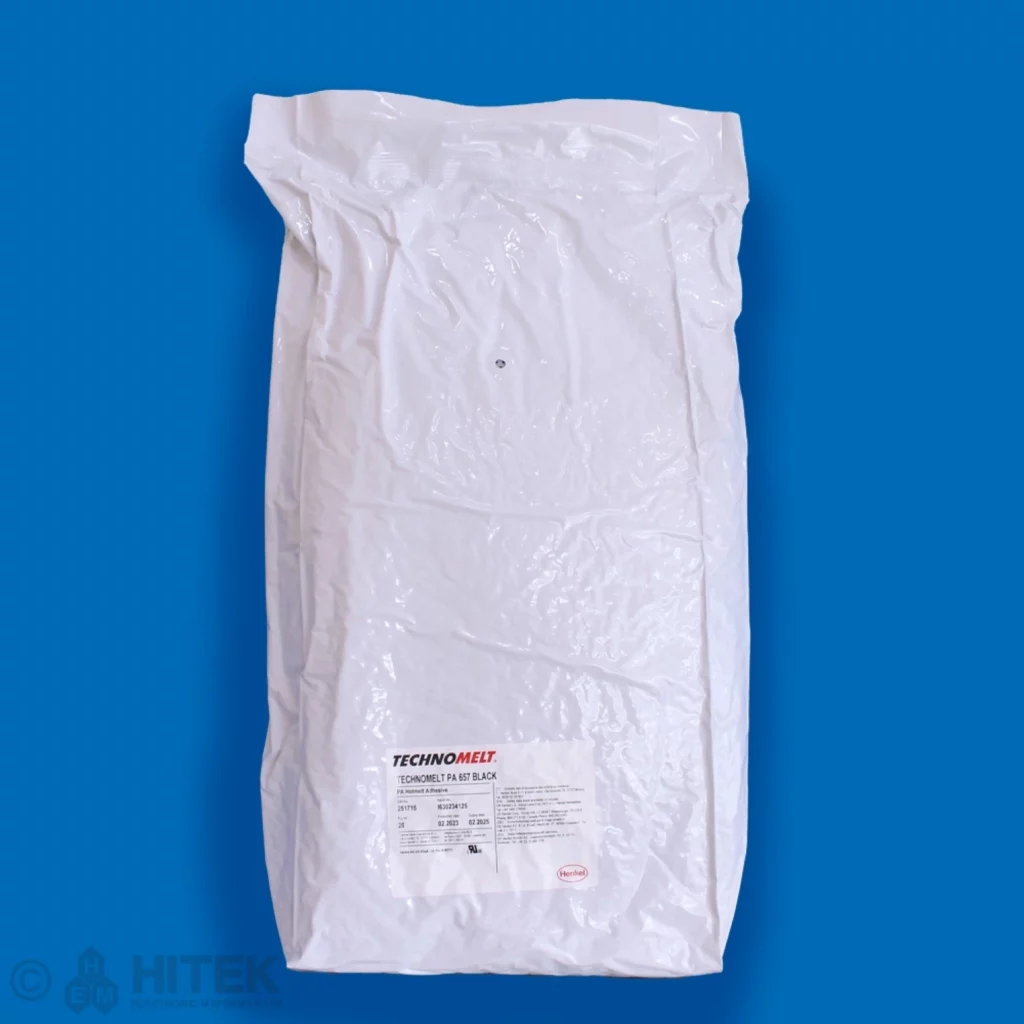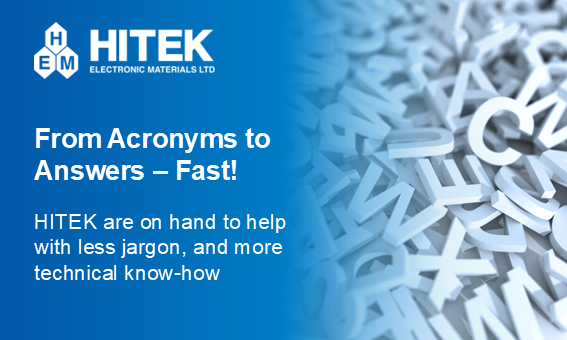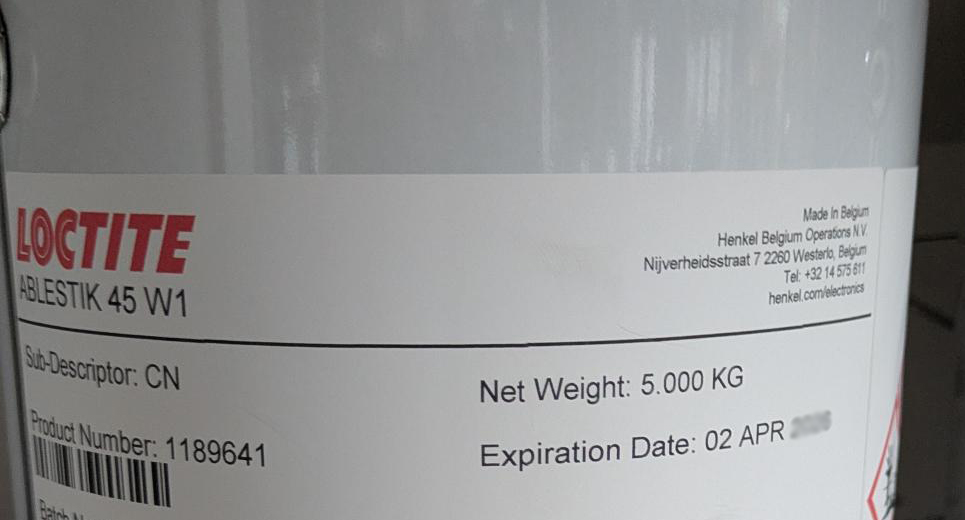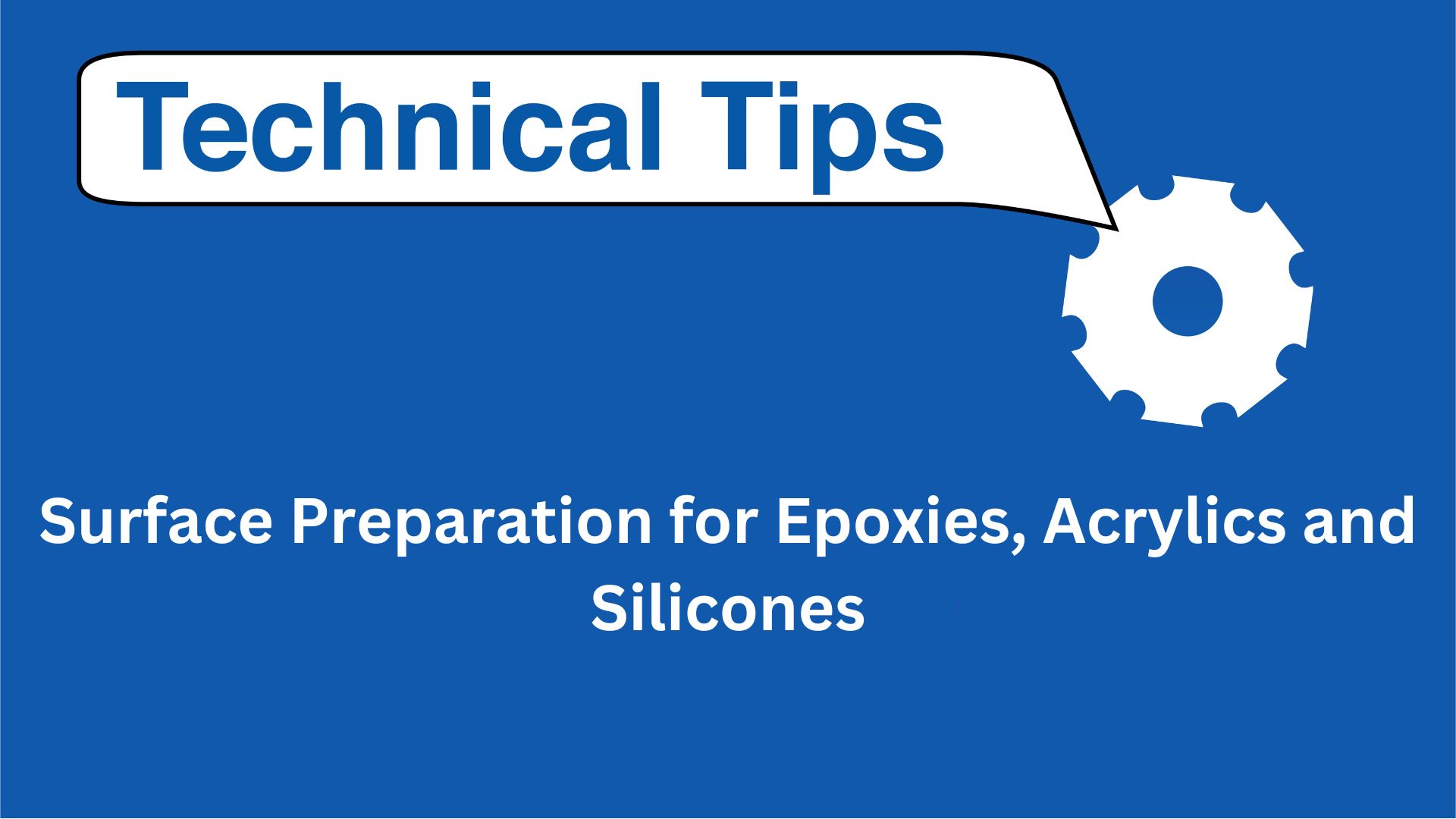
Surface preparation is a critical aspect in the use of epoxy resins. In order to create an effective bond, the surface must be clean. Dirt, oil, moisture and weak oxide layers prohibit good adhesive bonding, and must be removed through proper surface preparation methods. Otherwise, the adhesive will bond to these boundary layers rather than to the substrate. Surface preparation enhances the quality and permanence of a bonded joint by performing one or more of the following functions:
- Removing contaminants
- Controlling absorbed water
- Controlling oxide formation
- Poisoning surface atoms that catalyse polymer breakdown
- Matching the substrate crystal structure to the adhesive molecular structure
Sufficiently clean surfaces can usually be obtained by thorough one of the following
- Surface degreasing with a solvent
- Wire brushing
- Sand blasting
This is usually adequate for most metals and plastics. Once the surface has been cleaned, precautions should be taken to eliminate contamination of the cleaned surface.
The following surface preparations have been recommended in the literature. Where appropriate, they are followed by a neutralising rinse, a water rinse and an oven dry.
Ferrous metals
Sand blasting with grease free sand or wire brushing has been found generally satisfactory for iron. In some cases
chemical cleaning solvents can be used
Non-Ferrous metals
Aluminium and aluminium alloys:
Degrease and dip for 10 minutes at 70°C in the following solution (parts by weight):
- 66 pbw Sodium dichromate
- 666 pbw 96 % sulphuric acid
- 1000 pbw Water
The solution should not be overheated, since at temperatures above 70°C there is a re-arrangement of the
surface of the aluminium, which leads to poor bonds. The sodium dichromate etch gives a controlled and
porous layer of aluminium oxide on the surface. If this film is exposed to air too long, the film will become too
thick and this will lead to poor adhesion. Therefore, material should be bonded within 2 hours after the
etching.
Copper and copper alloy
Etch for 1 to 2 minutes at room temperature in the following solution (parts by volume):
- 15 pbv 42% ferrite chloride
- 30 pbv concentrated nitric acid
- 197 pbv water
Gold
Degrease and roughen surface
Lead
Degrease and abrade with emery cloth
Nickel
Etch 5 seconds in concentrated HNO3.
Zinc and Zinc alloys
Degrease and abrade with emery cloth. Apply epoxy resin immediately. Material can also be etched by using
an etch solution (20 parts concentrated HCl/80 parts water) 2 to 4 minutes at room temperature.
Other Surfaces
Thermosetting Plastics
Clean the surface with a solvent, followed by a light sanding to remove surface contamination. This treatment has
been found satisfactory for diallyl phthalate, epoxy, phenolic, polyester, polyurethane, and urea-formaldehyde
resins.
For some plastics a plasma treatment can be used to obtain good adhesion. Specialised companies should be
contacted to receive detailed information.
Carbon
Degrease, abrade with fine emery cloth and degrease.
Ceramic
Degrease, abrade with carborundum/water slurry.
Glass
Solvent cleaning with trichloroethylene.
The degree to which substrates must be prepared depends upon several factors including the ultimate bond strength required, the degree of performance needed, the service environment, the amount of contamination on the substrate and the type of substrate.
For example, for plastics surface preparation can be more effective than for metals, as most are contaminated with either mould release or wax which must be removed prior to bonding.
In encapsulation applications, it is important that good bonding is obtained with the surface of the substrate of the housing. Bond strengths and bond performance depend greatly on the type of substrate which is in contact with the encapsulant. The main purpose of surface preparation is to ensure that adhesion develops in the joint between substrate and encapsulant, in order to minimise moisture absorption and to improve chemical resistance at this
interface.
Want an offline copy? Download it below!


